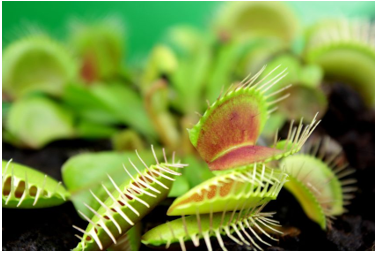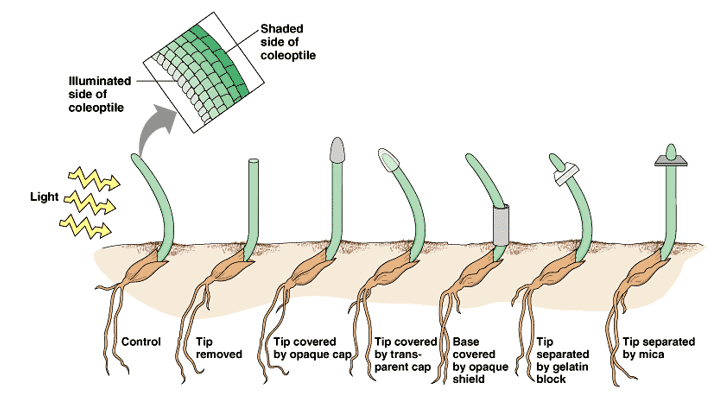In this post
Like animals, plants respond to different stimuli that are in their environment. The reason why most plants react much slower to situations than animals do is due to the fact that they only use hormones and not nerves. Despite this, there are some plants that react very quickly such as the Venus flytrap. This plant can detect when flies and other insects land in its leaves and then quickly close around them.

Tropisms
The reason why most plants can’t react quickly is because they adapt to stimuli by changing their growth. For example, roots will grow down into the ground when gravity is sensed and plants grow towards sunlight so that they can carry out photosynthesis. In both these cases, the plant is reacting to directional stimuli (light and gravity). When a plant reacts to a directional stimuli it is called a tropism. When the plant reacts by going towards the stimulus, it is a positive tropism; when the plant reacts by moving away from the stimulus, it is a negative tropism. Tropisms can be divided into geotropism and phototropism where ‘geo’ means Earth so these are responses to gravity, and ‘photo’ is light so these are responses to light.
In plants there is an aerial part (the leaves) which needs light to carry out photosynthesis. This means that a phototropism is the strongest response of the shoots of a plant. They will grow towards the light so that their leaves can generate energy through photosynthesis. Another tropism in plants is the response of roots to gravity. Roots work to anchor the plant and also bury deep underground as more water is found there. Therefore, the roots show a geotropism by reacting to gravity – they are strongly geotropic. Some plants also show signs of hydrotropism which is an attraction to water.
Detecting light
Since plants do not have any sensory organs or a nervous system, the way that they detect stimuli is very different. This phenomenon was first explored by Charles Darwin who used cereal coleoptiles which are very easy to grow. Darwin started growing a coleoptile horizontally and then changed the direction of the light to come in from the side. The coleoptile started to lean towards the light and continued to grow. He then covered the very tip of the coleoptile and saw that no bending towards light occurred. He therefore concluded that the tip of the stem was where light was detected. Since plants don’t have a nervous system, scientists knew that the messages must be passed through hormones. Over the years, many different experiments were conducted in a similar manner which can be seen in the diagram below.

In the above diagram, we can see that when the tip is covered with an opaque cap, it cannot detect light and therefore the plant does not bend. A transparent cap does not have the same effect so we know that this is down to the detection of light. The same does not happen when the base of the plant is covered – we can therefore conclude that the tip of the plant detects the light stimulus. In the two experiments on the right, the tip has been removed. The first places the tip on a gelatin block and then back on the plant. Gelatin is a material that water-soluble chemicals can pass through (such as hormones). The other experiment uses mica (a material that does not allow water-based chemicals through) to separate the tip from the stem. This time the coleoptile does not bend. We can therefore conclude that a hormone is being released by the tip to the rest of the plant. Scientists have identified the hormone that is responsible for this as auxin. This hormone controls growth, and several other hormones that control growth have also been discovered. Together they are all known as plant growth substances rather than plant hormones.



